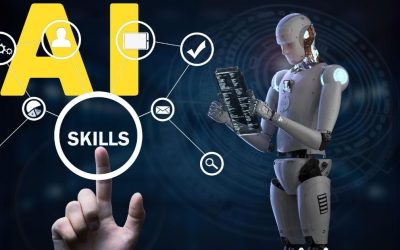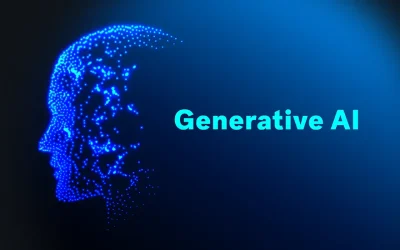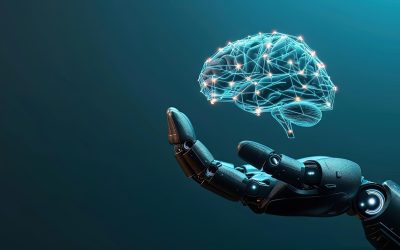(AI) has risen as nearly every industry has changed, and coding is no different. Today, developers not only have instant code generation, debugging assistance, but also frequently have personal learning resources provided by tools like ChatGPT and . The developments have led many to doubt the utility of traditional human written tutorials and guides. In an era of AI that produces code snippets, explains intricate concepts and even writes entire programs in seconds, are they becoming out of date?
While certainly transforming the landscape, AI-generated content hasn’t rendered human-written guides obsolete. In fact, they remain as valuable and irreplaceable as ever. Through the lens of ChatGPT, this article explores the emerging world of coding and AI, the accomplishments and limitations of AI-driven tools, and the continued relevance of human-written tutorials in an AI-developed world. This holds especially true in dynamic, regulated sectors like nj online sports betting, where clear, accurate, and human-verified guidance is essential to navigating complex rules, odds, and user experiences.
From the integration of AI into coding, nothing has been different except for the better. The AI tools make it much easier for beginners to enter because they have immediate answers to questions without the need of having a lot of prior knowledge. AI is a productivity boosting tool for experienced developers who can automate the repetitive task and give smart suggestions. But such convenience, has its own set of challenges. With too much reliance on AI, students create a superficial understanding of the basics of coding principles which would hinder creative and critical thinking. Plus, AI generated content is impressive but lacks the depth, context, and emotional resonance found in human written tutorials.
However, human written tutorials are created with much care and expertise. Besides that, AI cannot offer them a sense of , structured learning paths, and real-world examples. It encourages the learners to think critically, solve problems on their own, and explore the ‘why’ behind the code. In an age where AI is dominating more and more of the world, these are qualities that are even more precious than before.

The theme of this article is the relationship between human written tutorials and AI, and why AI and human written tutorials need to work as a symbiotic relationship for future coding education. If we blend the efficiency of AI with the breath and inventiveness of human expertise, developers of any skill degree will have a more efficient and complete learning expertise.
The Rise of AI in Coding: A Game-Changer for Developers
ChatGPT is an AI powered tool which has completely changed how developers work. They provide quite a lot of advantages with respect to who can code easier, more efficient and more fun, and this is why they have become popular in the tech industry. As a patient and ever available tutor especially for beginners, AI is an instant explanation, code snippet provider and a debugging capability. That lowers the barrier to entry for the next billion people who will learn to code, it is not so overwhelming. For veteran developers, AI is a sheer boon of productivity, eliminating the need to write repetitive tasks, suggesting optimizations and even code boilerplate. It makes professionals to leave the low level mundane details and focusing on higher level problem solving and innovation.
In addition, AI tools such as ChatGPT are constructed to adapt to the way the individual learns, with different skill levels, rather than artificially keeping to a single mode. Being versatile, they can be simplified for beginners or be advanced in insight for them, making them suitable for even a novice or advanced developer. Be that as it may, these tools are indeed powerful, however, they are not perfect. Since they rely on preexisting data, human mentors are creative, context, and emotional intelligent. Therefore, although AI has become a core element in today’s developer’s toolkit, it does not replace the human expertise and guidance that is still required.
- AI creates code snippets, functions, and even whole programs out of prompts. Instant Code Generation. It saves a significant amount of time and frees the developer’s cognitive load up for solving higher level problems.
- AI for Debugging Assistance can help find errors in a code, propose corrections, and explain the reasons behind the failure of a particular approach. It is particularly useful to beginners who are still learning how to debug.
- AI can be personalized to the skill level of a individual by creating simplified or advanced explanations for the users. AI has such adaptability that it makes it a powerful tool towards self-paced learning.
- AI tools lower the barrier to entry for coding by providing instant answers to questions and reducing the need for extensive prior knowledge. This democratizes access to programming skills.
The Limitations of AI in Coding Education
AI tools such as ChatGPT are completely useful and, given the circumstances, quite necessary, but they aren’t a magic wand for all coding-based issues. Some of them key limitations are here:
1. No Context and Nuance: AI generated responses are nothing more than a pattern of the data they were trained on. This makes it possible for them to give the right information in most cases, but they often leave behind the broader context or do not explain why something is like that. Meanwhile, human written tutorials are accurately written by people who have solid understanding of the topic and therefore hold the ability to go into detail in explanations, something AI cannot even come reasonably close to.
2. Quick Answer Complacency: AI tools give quick answers, but strong surface level knowledge is not promoting deep learning. The use of AI to generate code for developers may prevent them from acquiring crucial knowledge and problem-solving skills that can only be obtained from ‘manual’ work.
3. Four things that I learn from coding: Creativity and innovation, problem solving, being the leader for change and how it helps me solve problems. The human tutored ones generally contain real world examples, case studies, creative solutions that develop a vision to come out of the box for the best developer.
4. Ethical and Quality Concerns: AI generated content is only that good as the data it was trained on; its ethical and quality concern. If the training data includes biases, inaccuracies and old information, then the AI’s output may too. When used with experienced professionals, human written tutorials will be more accurate, more up to date and free of biases.
5. The Emotional Component: One of the things that will set you down is lack of emotional connection. There will still be something that human produced will not be AI, human written tutorials will include personal anecdotes, motivational advice, a feeling of your mentor. Such an emotional tie can be an excellent motivator for the learners.

Why Human-Written Guides Still Matter
Given the current AI driven age, human written tutorials and guide have some unique perks which make them a must have:
- These types of tutorials are created by experienced developer who has plenty of knowledge about subject matter. But they can offer insights, best practices and real-world examples beyond what AI can.
- Guides are usually structured in what is called learning paths for human beings to go from the basic to advance within that time. Although helpful, AI tends to give piecemeal data that isn’t directly related to the learner’s study objectives.
- Human tutorials can help learners solve problems of interest using critical thinking. Many include exercises, challenges, projects, and other techniques designed to have developers apply their knowledge in real world scenarios. Otherwise, AI might offer stocked solutions, living in opposition to free thought.
- Learners are often part of a very large ecosystem including forums, discussion boards, and community pieces where they can interact with peers and mentors. The sense of community helps foster collaboration, networking and mutual support.
- Humans can adapt better to diverse styles of learning. For some learners, visual aids are better than others appreciate hands on exercises or extensive explanation. Learning tutorials can be written by humans and they can be taught in different methods so that anything suits the preferences from one another.
- Human authors can solve the ethical and responsible issues, for example data privacy, security and influence of technology on the society. And AI neglects these topics often in favor of technical solutions.
The Synergy Between AI and Human-Written Tutorials
Learning from both AI and human written tutorials simultaneously is more advantageous than seeing the two as competing for your attention. They can create a more effective and holistic learning experience together.
1. Using AI as a Supplement, not a Replacement: AI is not meant to replace human written tutorials. Instead, we can use AI for the instant feedback, specific questions, and code snippets. This eliminates the access of learners to syntax errors to avoid confusion while focusing on the concepts.
2. AI Interaction: Through AI interaction, human experts and educators can work with AI to bring the best of both expertise and design. An example of an online course would be AI driven quizzes and exercises with human written explanations and case studies.
3. Empowering Learners: AI makes Learners enabled to study topics by their own tempo, and human-written tutorials are required to fully grasp deep concepts. The combination of these fosters more engaging and more engaging learning experience.
4. Continuous Improvement: AI tools can help improve human authors’ tutorials over time: Receive continuous feedback and identify gaps in your content, enabling continuous improvement. The iterative nature of this process provides assurance to our human written guides that they are maintained as relevant and high quality.
The Future of Coding Education: A Balanced Approach
The future of coding education appears to be that AI will complement human written tutorials to reap their respective strengths. The trends to watch here are:
- Personalized Learning with AI: AI will become more and more valuable for personalized learning, personalizing the content for individuals’ needs and preferences. Nevertheless, AI cannot replace human-written tutorials as you won’t find the depth and context that AI can’t offer.
- AI Driven Tools with Human Expertise: The use of collaborative Learning Platforms will become more common by combining AI driven tools with human expertise. With these platforms, learners will be able to engage with both human and AI mentors improving upon a less dynamic learning space.
- AI Handles More Routine Tasks: With AI being able to handle more routine coding tasks, it will become more straightforward to teach coding to the children, and will instead focus on their creativity, innovation, and problem solving. Human written tutorials will play a critical role in helping the students develop these skills.
- Ethical and Responsible Coding: As technology becomes more pervasive in our society, so will be focused on the more ethical and responsible coding. That means human written tutorials will be crucial to cover these complex and messy topics.
Conclusion: The Enduring Value of Human-Written Tutorials
In the current ChatGPT times, there has never been a time where we are so aware and fascinated with the power of AI on coding. This has made coding more accessible to beginners, more efficient and fun to developers who are in any nature of coding. While human written tutorials and guides are still important as ever, the fact is that there are many ways that a machine can learn to do something that a person (unmanned machine) cannot do easily. They offer that depth, context and creative element that AI cannot offer as well as critical thinking, problem solving and ethical awareness.
AI can facilitate, rather than mandate over human tutorials. With this balanced approach that used AI’s strength and human expertise strengths to improve the learning experience of developers across the world, we do strive to create a more holistic learning experience. Now, the choice of AI or human-written tutorials for coding education is a matter not of choosing between the two but of seeking a proper union of them.
References
- Nikolic, S., Sandison, C., Haque, R., Daniel, S., Grundy, S., Belkina, M., … & Neal, P. (2024). ChatGPT, Copilot, Gemini, SciSpace and Wolfram versus higher education assessments: an updated multi-institutional study of the academic integrity impacts of Generative Artificial Intelligence (GenAI) on assessment, teaching and learning in engineering. Australasian journal of engineering education, 29(2), 126-153.
- Brown, C., & Cusati, J. (2024). Exploring the Evidence-Based Beliefs and Behaviors of LLM-Based Programming Assistants. arXiv preprint arXiv:2407.13900.



